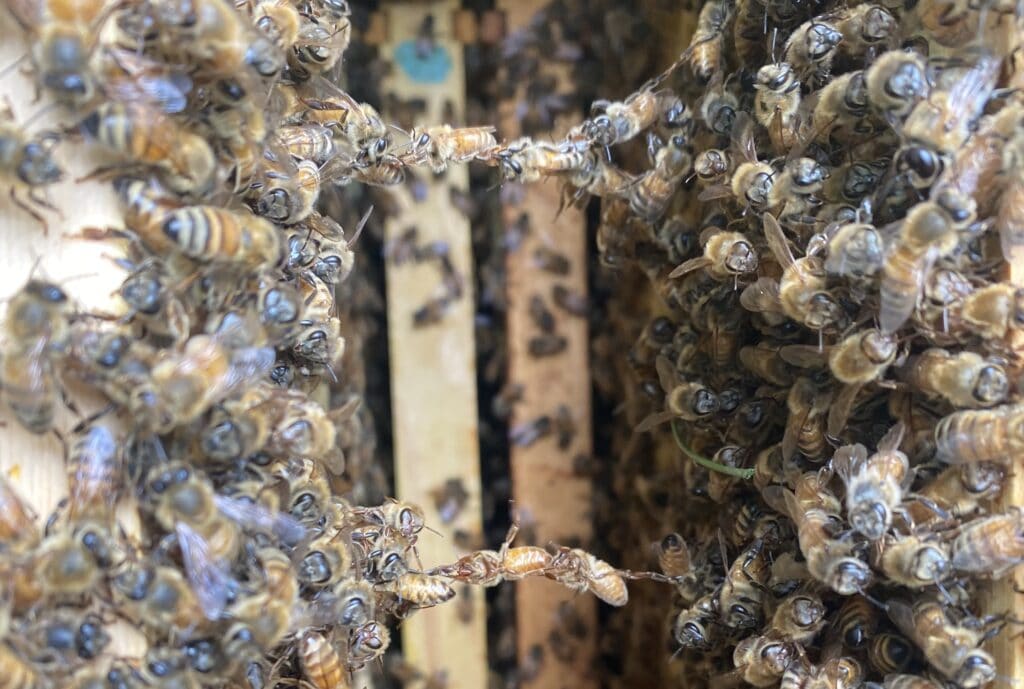Contents (Updated August 15, 2022):
- Are the bees dying?
- Is colony collapse disorder still an issue for honey bees?
- If CCD is no longer a big issue, are the bees still dying?
- Should we worry about competition between honey bees and native bees?
- What are the primary factors affecting honey bee and native bee health today?
- What additional challenges do honey bees face?
- What is The Best Bees Company doing to address these challenges?
- What we’ll experience in the years to come
- What to expect if you have a new honey bee hive
- What you can do to help build stronger populations of native bees and honey bees
- FAQs
Why are the bees dying?
Perhaps it’s the influence of Hollywood, where civilization is always rescued at the last minute by a brilliant scientist, or a dying child is saved by a doctor who wouldn’t give up until she’d found a cure, because we all seem to hope for silver bullets that will solve our most perplexing problems. “Bee colonies are complex, adaptive systems—they’ve evolved to deal with a host of inter-related factors including climate change, weather, food supply, competition and pathogens,” says our Staff Scientist Emily O’Neil. “No single solution can address all of these; instead, we expect to find, over time, a number of inter-related solutions that will work together to significantly improve bee survival and health.” At The Best Bees Company, we never give up hope for finding solutions to the many issues facing bees, but as scientists, we know there are no silver bullets waiting to save bees.
“No single solution can address all of these; instead, we expect to find, over time, a number of inter-related solutions that will work together to significantly improve bee survival and health.”
-Emily O’Neil, Staff Scientist at The Best Bees Company
The combined effect of climate change, habitat loss, pathogen infestations, and pesticides still poses a serious threat to bee health and survival. After a decade of precipitous declines, the total number of honeybee colonies in the U.S. stabilized, and for the past five years, we’ve experienced only minor increases and decreases. By the end of 2019, there were 3.02 million honeybee colonies in the U.S. In April 2020, that number dropped to 2.98 million. These totals mask the ongoing battle to replace lost hives, which continues to be a big issue, with more than 40% of all honeybee colonies lost each year in the United States.
Is colony collapse disorder still an issue for honey bees?
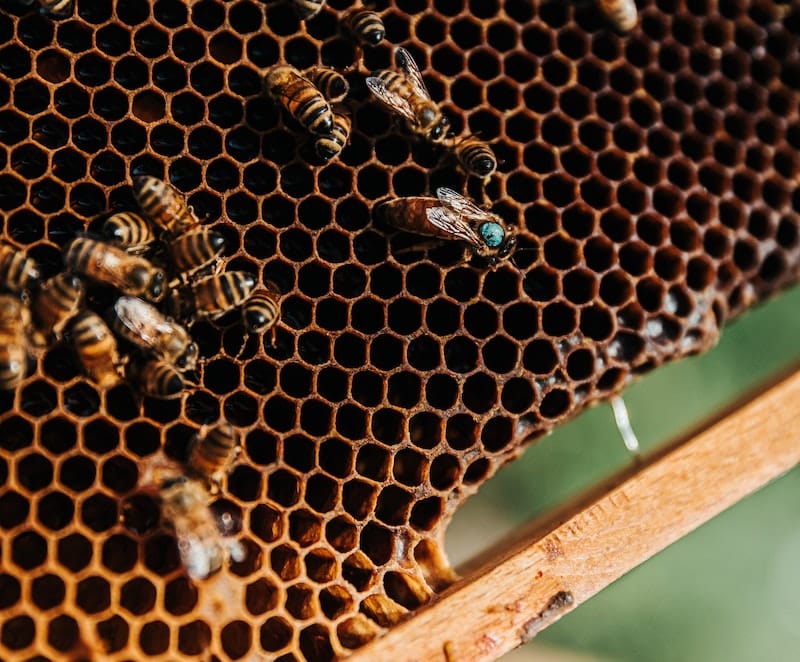
When colony collapse disorder (CCD) was first identified in 2006-2007, honey bee hives worldwide were experiencing unprecedented losses. The mysterious disappearance of worker bees from hives brought the plight of bees to the public, and with it much speculation as to the cause of this disorder. While this phenomenon still occurs today, it happens much less frequently. According to the EPA, “Once thought to pose a major long-term threat to bees, reported cases of CCD have declined substantially over the last five years.” Researchers have found no single cause for CCD; instead they focus on a number of factors that negatively impact bee health, such as habitat loss, pathogens and pesticide use.
If CCD is no longer a big issue, are the bees still dying?
Honey bees are no longer in danger of disappearing completely, as some feared in 2006, but the conditions that contributed to CCD are still with us. Some factors, such as pathogen infestations and habitat loss have grown worse over the past years. This is why, even though scientific research on bee health has led to improvements in beekeeping best practices, we’re still seeing colony losses of 40% or more in many areas of the country.
Should we worry about competition between honey bees and native bees?
Some members of the research community have expressed concerns that the movement to rebuild our nation’s stock of honey bees, especially in urban areas, might lead to honey bees outcompeting native bees for dwindling forage. Their concern is that without better understanding of the relationship between honey bees and native bees, we might overstock honey bees, and those bees would deprive native bees of the food they need to survive.
Honey bees and native bees have existed harmoniously in Europe, Asia and Africa for as long as mankind has kept bees, and the introduction of honey bees in the western hemisphere four centuries ago has not led to dramatic loss of native bees here.
Some studies, conducted in isolated rural conditions with limited floral diversity, suggested that honey bees can reduce native bee populations, but there’s no indication that urban areas, with the diverse floral species available to them, have experienced similar declines.
Instead of focusing on competition between bee species, we believe that we should try to improve conditions for all pollinator species. We can do this by increasing forage and forage diversity and significantly reducing our use of pesticides and herbicides.
What are the primary factors affecting honey bee and native bee health today?
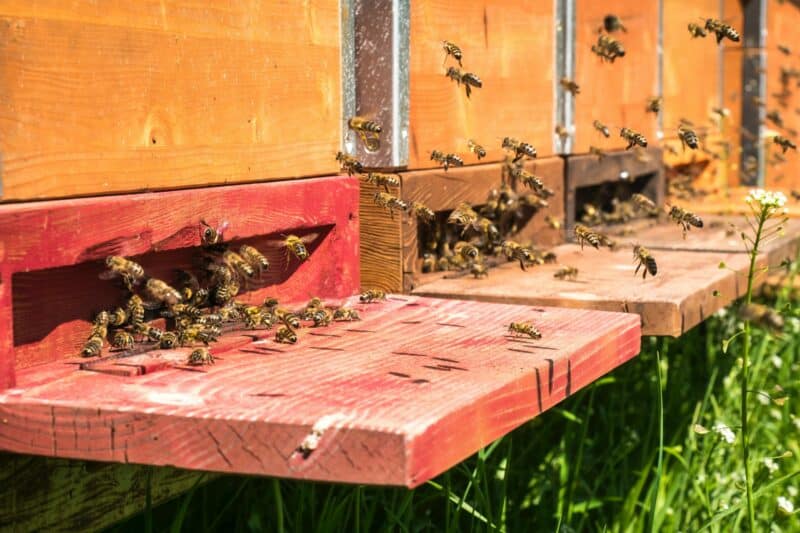
A number of factors negatively impact bees and other pollinators, including climate change, habitat loss, environmental degradation, the still widespread use of pesticides and herbicides, and with global trade, the introduction of non-native pathogens, such as viruses, mites and other parasites. Poisons and pathogens are the most immediately damaging. When they don’t kill bees outright, poisons such as pesticides and herbicides can weaken them, making it difficult for them to forage, and increasing the likelihood that pathogens will finish them off. Pathogens such as varroa mites are especially dangerous for honey bees, as they enter hives and breed there, feeding on brood until the colony cannot sustain itself.
Additionally, climate change is producing erratic and extreme weather conditions which damage hives, reduce forage, and make it harder for beekeepers to tend hives. Habitat loss not only reduces the amount of forage available, but the diversity of flowers available. A variety of flowering trees and plants is essential to most bees, as they gain vital nutrients from different species. Environmental degradation, through air and water pollution, can weaken bees as well.
Without human intervention, climate change, habitat loss and environmental degradation are expected to get progressively worse in years to come.
What additional challenges do honey bees face?
As colonial insects, honey bees are much more vulnerable to pathogens than native bee species, which are mostly solitary. Global trade has meant the introduction of pathogens, such as varroa mites, that spread quickly through densely populated honey bee hives. Varroa mites are the foremost pest affecting honeybees worldwide, limiting productivity, transmitting deadly viruses, suppressing bee immune systems and shortening bees’ lives.
Bee colonies are susceptible to two bacterial infections—American and European Foulbrood—and a fungal infection known as Chalkbrood. All three are serious threats to bee colonies. While there is no chemical treatment for Chalkbrood, good bee breeding and hive management can prevent its spread. Both forms of Foulbrood are highly contagious, and so require destruction of infected colonies. Nosema, another fungal disease, is one of the most prevalent infections in honeybees worldwide. Indications of Nosema infection are colonies that are low in population, slow to build up, and slow to produce brood and honey. Nosema infections affect the overall health of colonies and can lead to colony death.
Honey bees overwinter as colonies, and so are more susceptible to extreme cold and changes in winter and early spring weather patterns than solitary, ground nesting native species. New honey bee colonies are especially dependent on beekeepers in their first few months; if introduced late in the season, or if beekeepers fail to recognize problems occurring, such as low honey stocks, colonies may be too small and too weak to survive the winter.
What is The Best Bees Company doing to address these challenges?
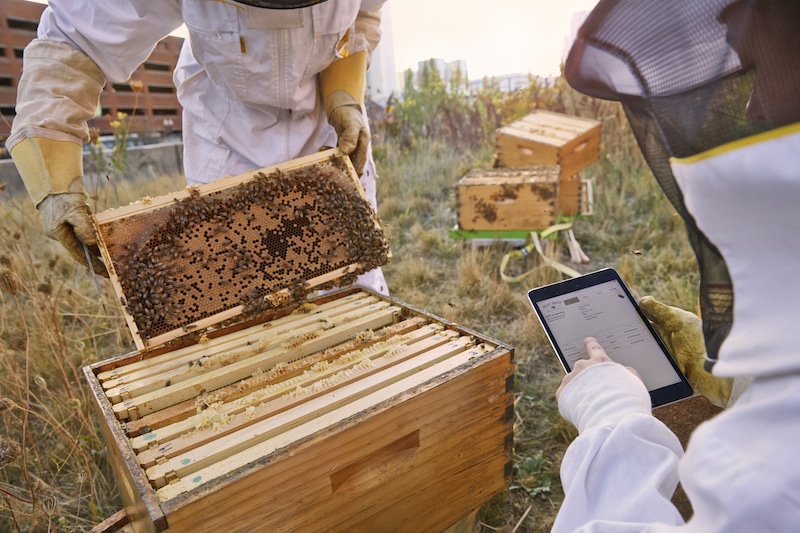
Best Bees has been studying bee health in a wide variety of environments, in different cities across the country, for more than 12 years. Using every hive as a data point, we’ve amassed the largest database of critical data on honey bees in North America. By observing bee health and conditions impacting bee health, we’ve been able to test the efficacy of different treatments, and apply best practices tailored to the needs of specific geographies. We share our learning with fellow scientists and with members of the larger beekeeping community, so that we all may better search for answers to the question, ‘why are the bees dying?’.
Our professional beekeepers monitor every hive we manage on a regular basis, and take action quickly to address problems and proactively support the needs of the colony. This includes protecting hives from cold and dampness, providing supplemental feeding, replacing lost queens, and treating infestations.
What we’ll experience in the years to come
Regardless of our best efforts, honey bees and native bees face problems that aren’t going away, and are likely to grow worse for the foreseeable future. Unpredictable weather changes and extreme conditions will be commonplace, and these will put stress on bees and beekeepers. We may experience significant ups and downs in hive survival rates, by region, for the next few years. As we implement more agile, localized approaches these swings should begin to flatten out.
Application of scientific learning to beekeeping practices will lead to gradually improved honey bee health, and better survival rates.
Where cities and towns take action to mitigate environmental problems — banning pesticide and herbicide use, protecting wild lands, encouraging the planting of pollinator-friendly trees, bushes and plants — honey bees and native bees will have a better chance of survival, and some populations may increase. Where these don’t occur, we can expect environmental degradation, pesticide use and climate change to lead to declining populations of all pollinator species.
What to expect if you have a new honey bee hive
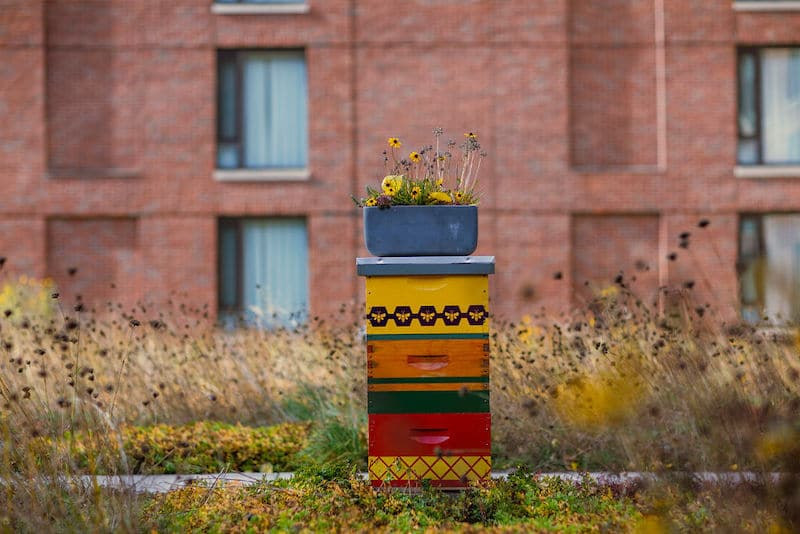
Feedback from our new clients is always positive; they often tell us that just seeing bees buzzing in and out of their hive, foraging on nearby plants, helps connect them to the natural world around them. We encourage you to observe your bees and to speak with your beekeepers when they come for hive service visits – they love to answer questions!
Most new hive installations occur without any problems – we’ll stock your hive in the spring with a young queen and a starter colony of about 10,000 worker bees. You can expect to see bees flying in and out of the hive, and if you have flowering trees, shrubs and plants on your property, you’ll see bees actively foraging from early morning until dusk. As the season progresses, your colony will grow substantially – many reach 40,000 or more bees at their prime! You won’t ever see this many bees, though, as most will be either inside the hive, tending brood, building & filling honeycomb, and cleaning the hive, and still others will be out foraging as much as 3 miles from the hive. In the late summer and fall, as the nectar flow winds down, your queen will produce fewer and fewer eggs, and the size of the hive will shrink to a size that’s optimal for over-wintering. You may see worker bees cleaning out dead bees. Don’t worry; this is perfectly natural!
While we’ll start your new bee hive with a healthy young queen and worker bees, local conditions can make it difficult for them to find sufficient forage to build up a large, healthy colony and ample food stocks to survive their first winter. Our beekeepers monitor new hives regularly, and if there are issues, such as low honey production, they’ll provide supplemental feeding. If there should be a problem with your new queen (which is rare) we’ll replace her. Varro mites are a common problem, and our beekeepers will treat with formic acid throughout the year to help prevent infestation.
Colonies that survive their first winter stand a better chance of survival in ensuing years, as they can take full advantage of the spring nectar flow, building up food reserves, brood, and larger, stronger colonies that will be better able to address the many challenges bees face today.
Regardless of the good work of beekeepers across the country, only 54.5% of bee colonies in the U.S. survive each year; survival rates for new colonies can be even lower. Losing a hive is difficult, but keep in mind we learn from every hive, and data from lost hives helps us to develop programs that will help improve survival rates of hives in the future. If your hive does not survive the winter, we’ll install a new hive as soon as weather permits and stock is available. Before you know it, you’ll have bees buzzing again through your property, doing their vital work of pollination!
What you can do to help build stronger populations of native bees and honey bees
There are a number of actions you can take that will help both native bees and honey bees:
- Landscape your property with pollinator-friendly trees, bushes and plants.
- Add a ground-level or rooftop pollinator garden.
- Stop using pesticides and herbicides.
- Advocate for wildland protection and for the reduction and eventual elimination of pesticides and herbicides in your area.
- Let people know you are keeping bees and why you support pollinators.
- Encourage others to keep bees and to plant pollinator-friendly gardens.
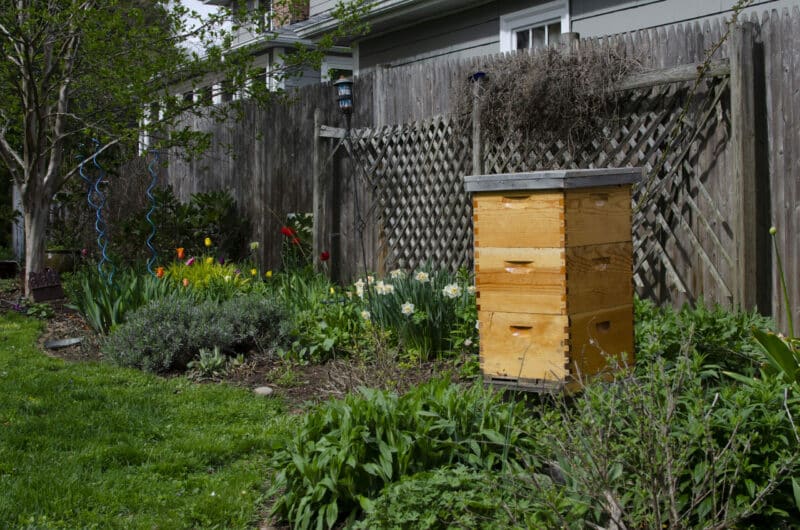
FAQs
Q: Is colony collapse disorder still a major problem for honey bees?
A: While colony collapse disorder still occurs, it is much rarer than when it was first identified in 2006-7.
Q: Are honey bees a threat to native bees?
A: Honey bees and native bees have coexisted in Europe, Asia and Africa for millennia, and here in the western hemisphere since the introduction of honey bees 400 years ago. While some studies suggest that in areas with limited forage diversity honey bees may outcompete native bees, there’s no evidence that this is true in most environments.
Q: Are honey bees still in danger?
A: Honey bees continue to die in alarming numbers, and the number of hives needed to sustain our food system can be maintained only through the effort of beekeepers across the country.
Q: What are the primary causes of hive loss?
A: Pathogen infestation, habitat loss, pesticide/herbicide use, pollution and climate change are the primary causes of hive loss. Bee colonies are more vulnerable when faced with multiple, compounding issues.


